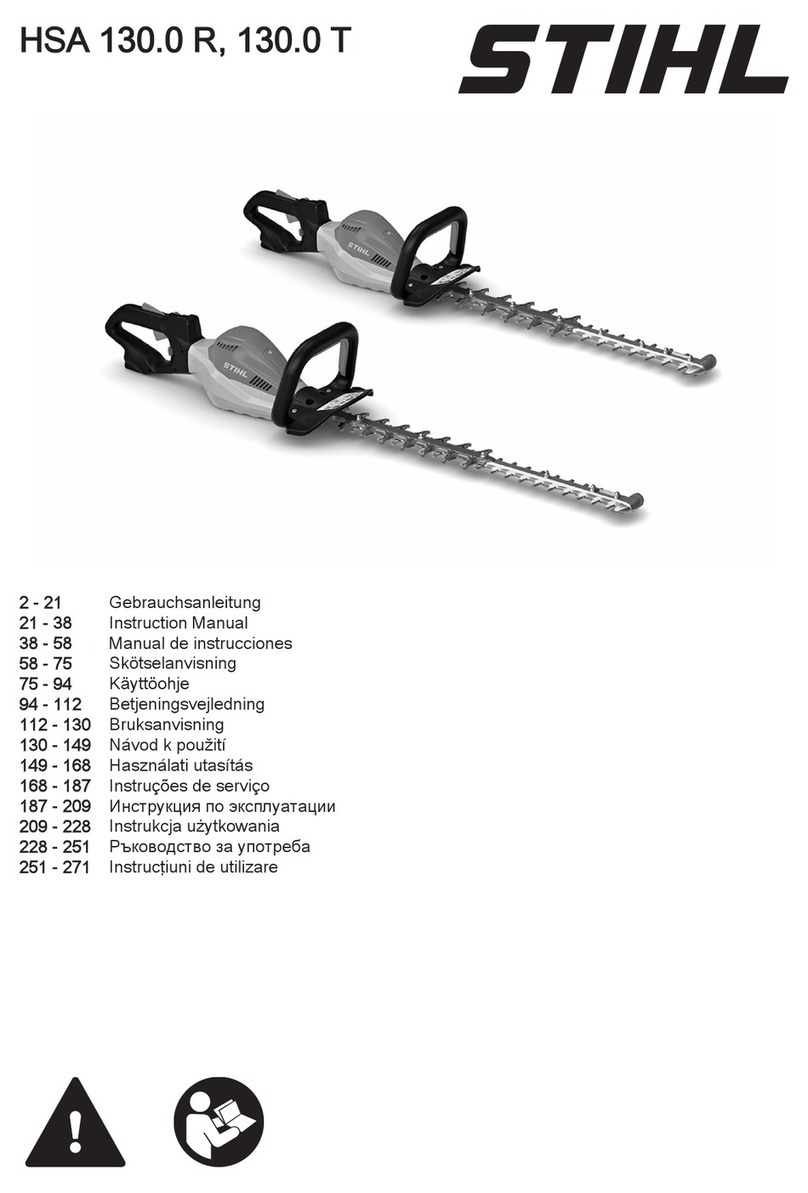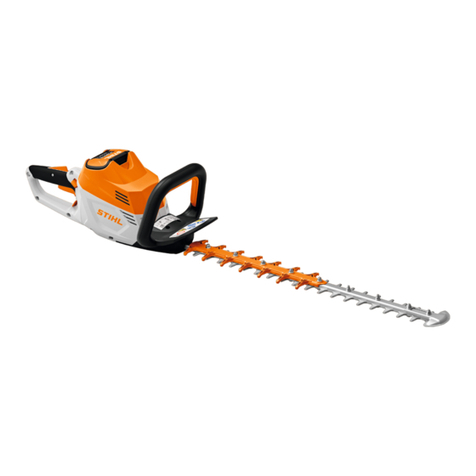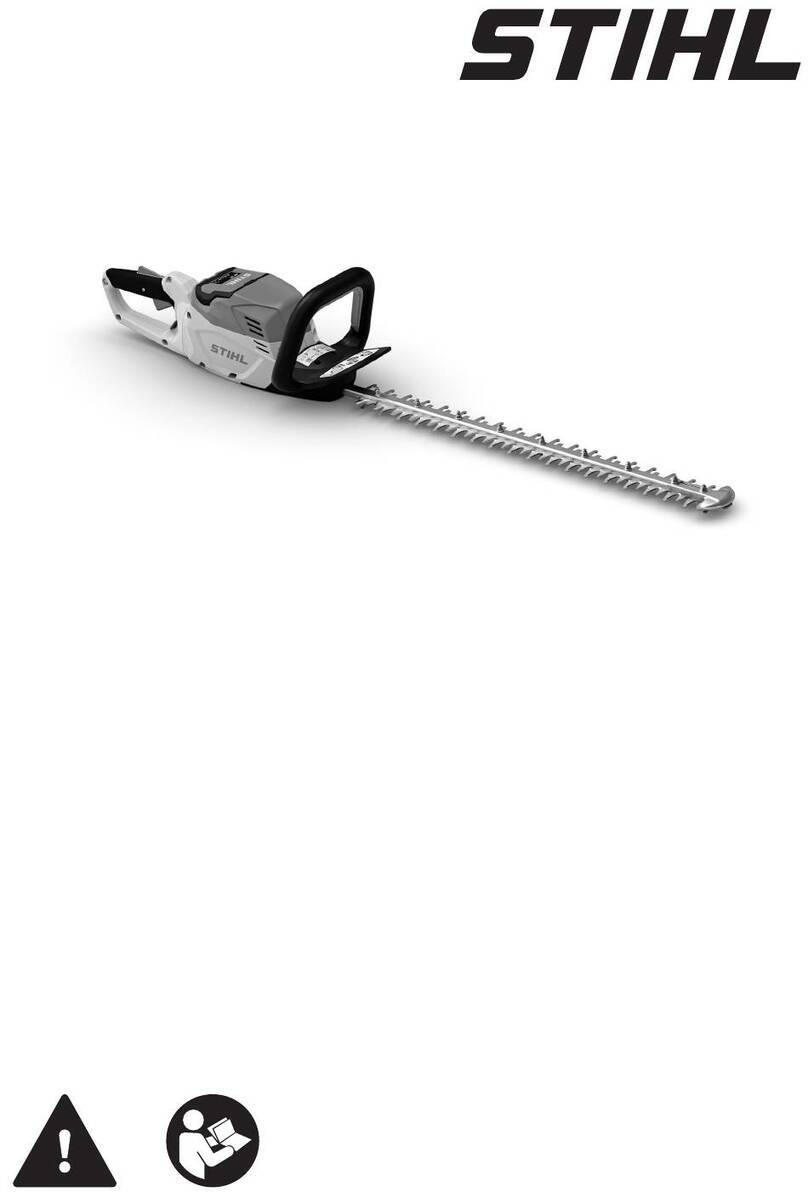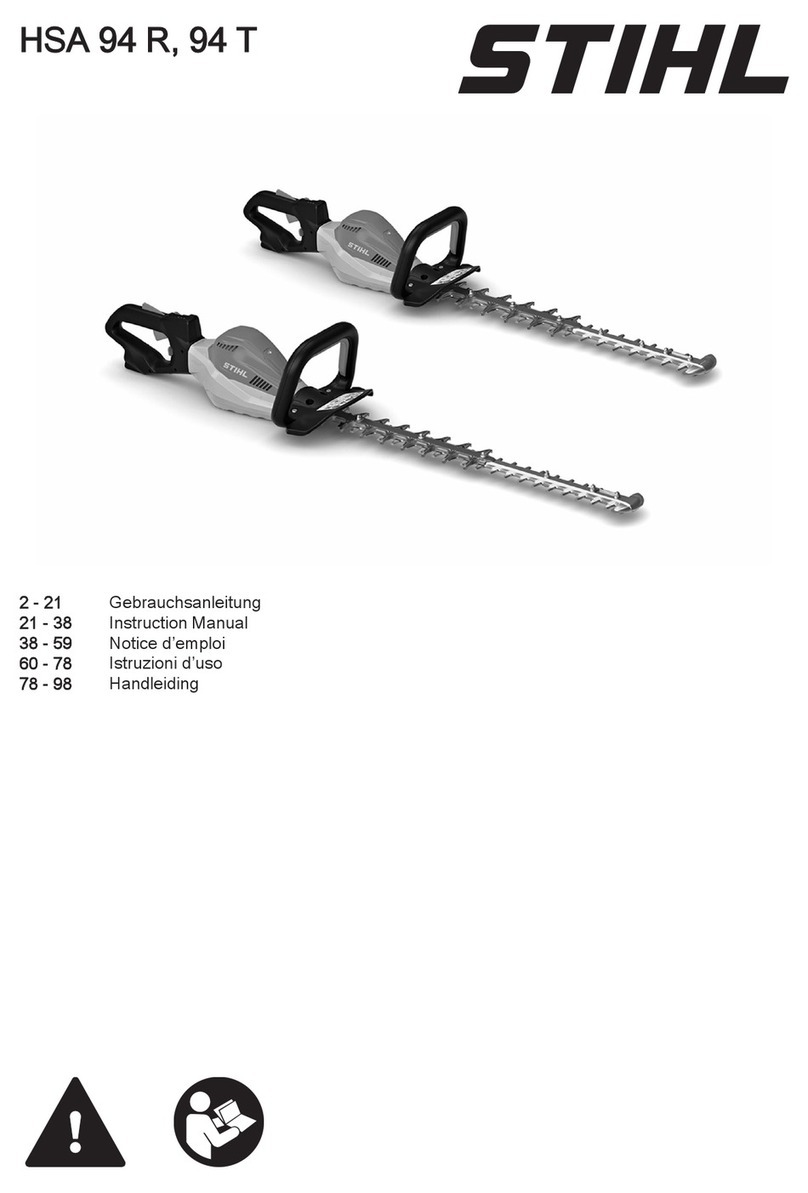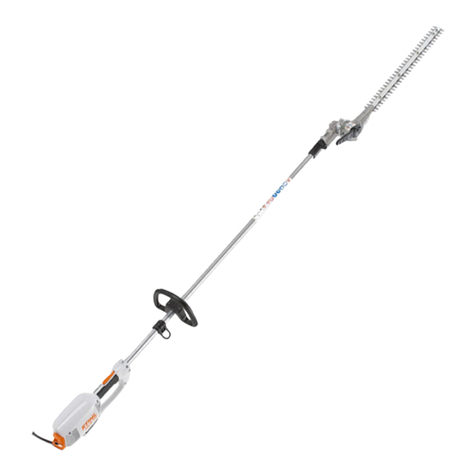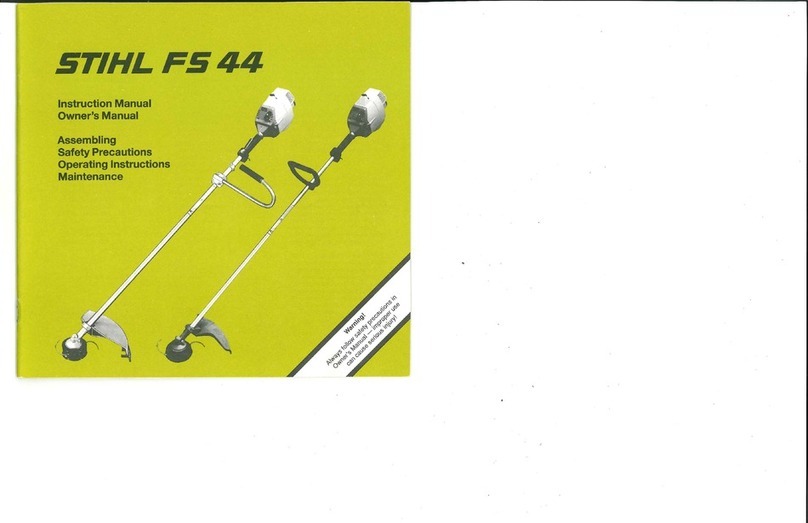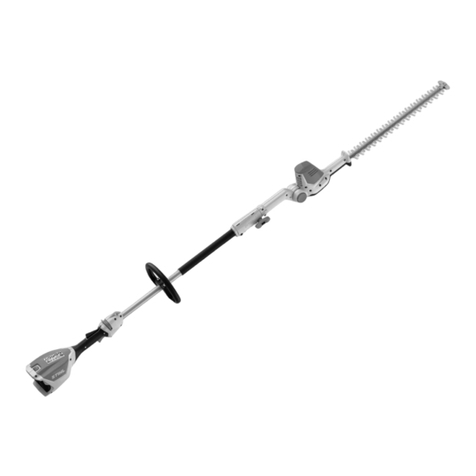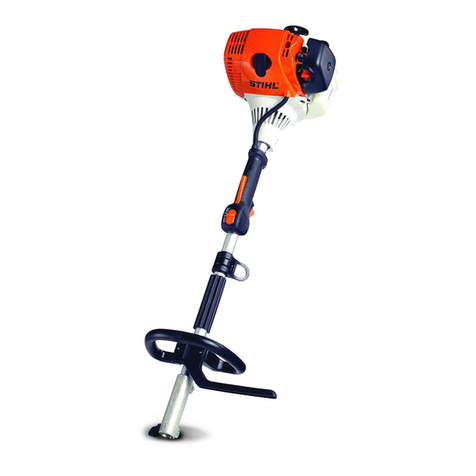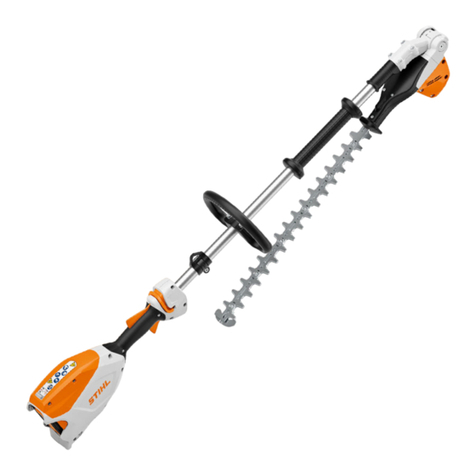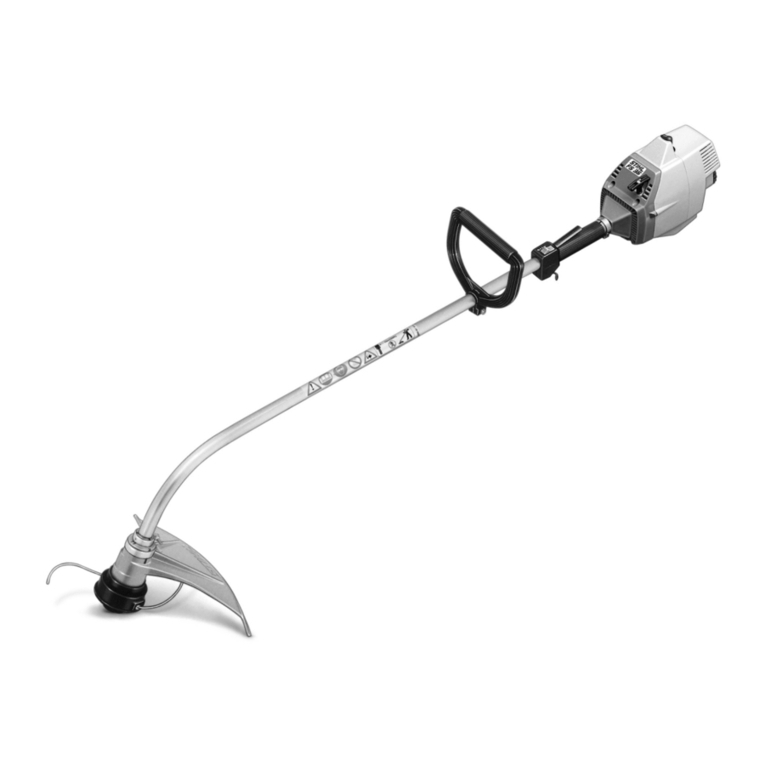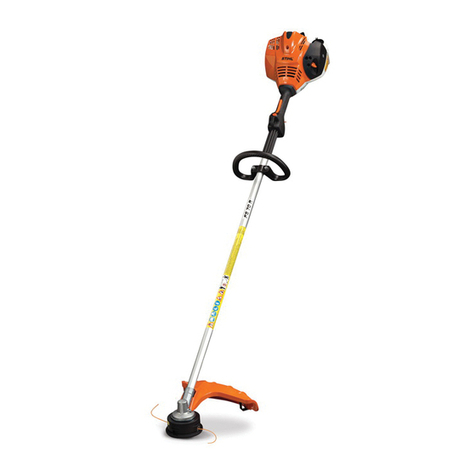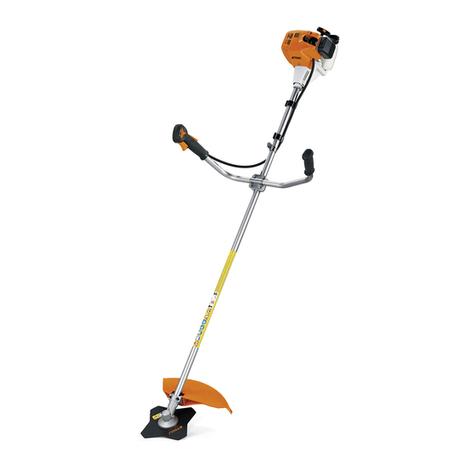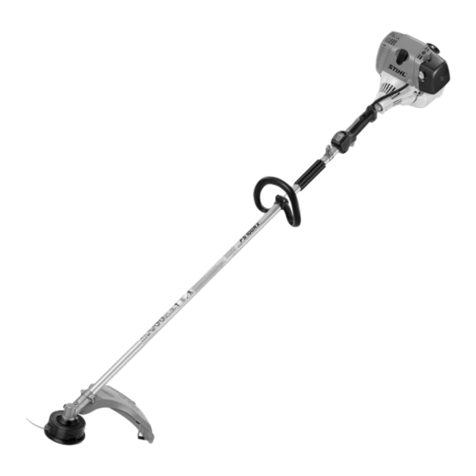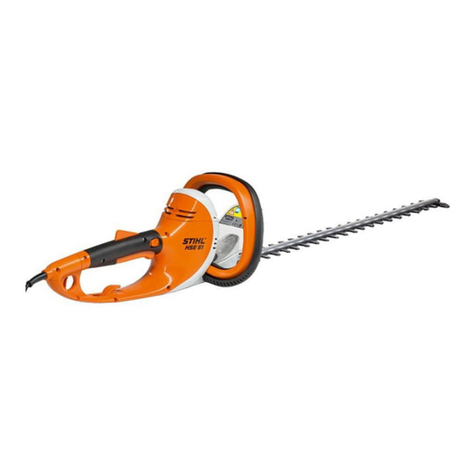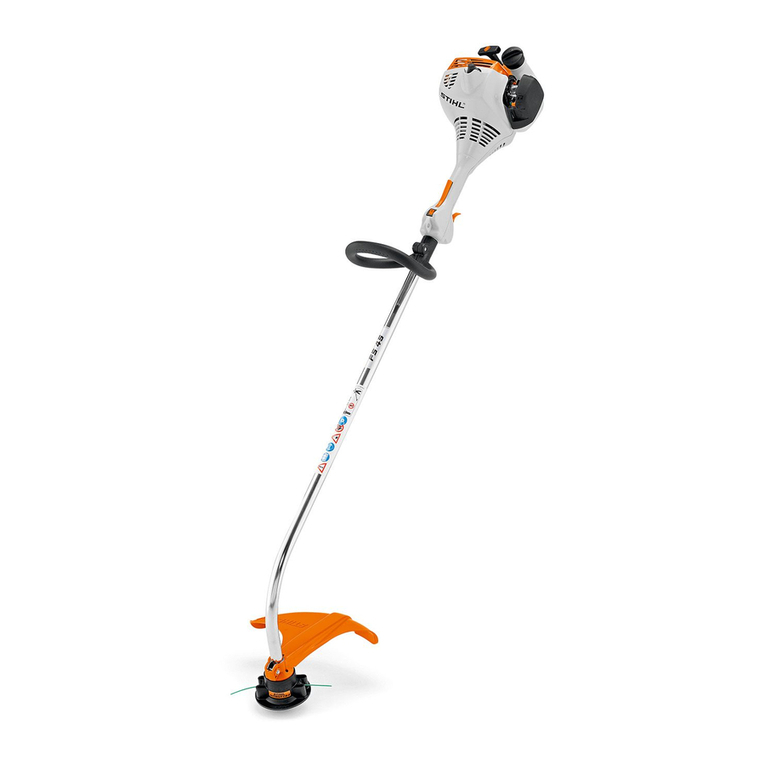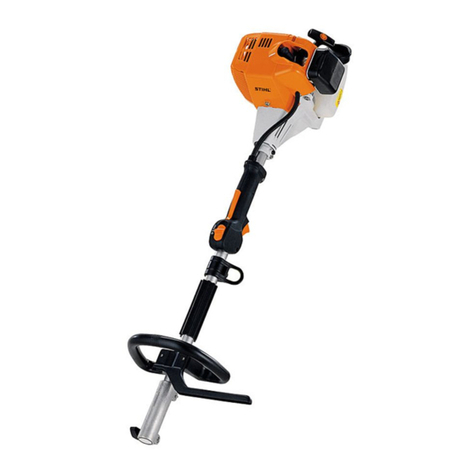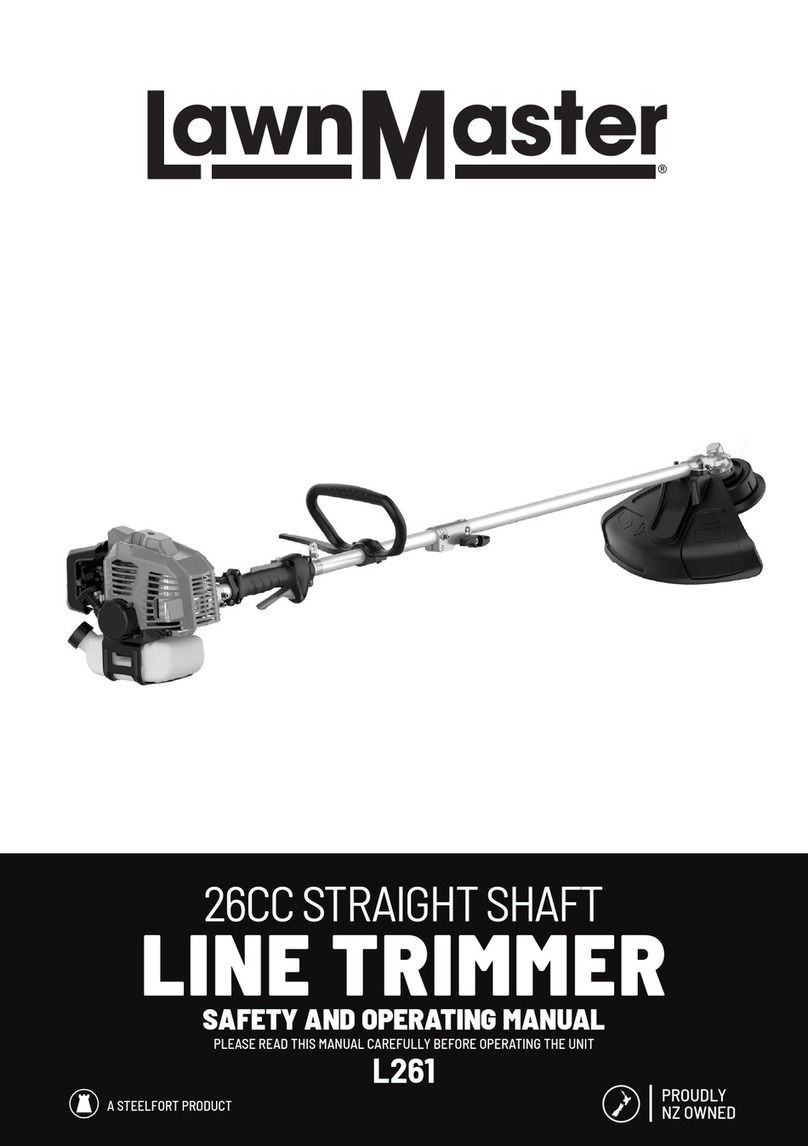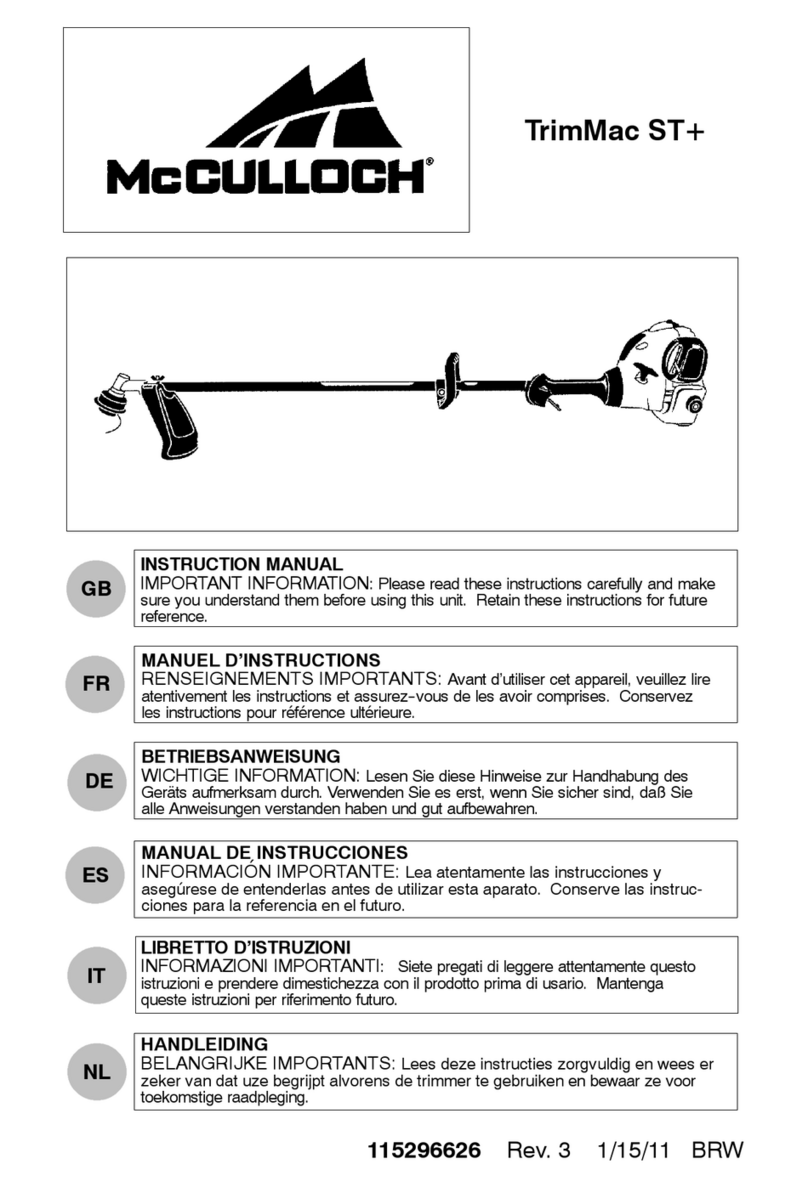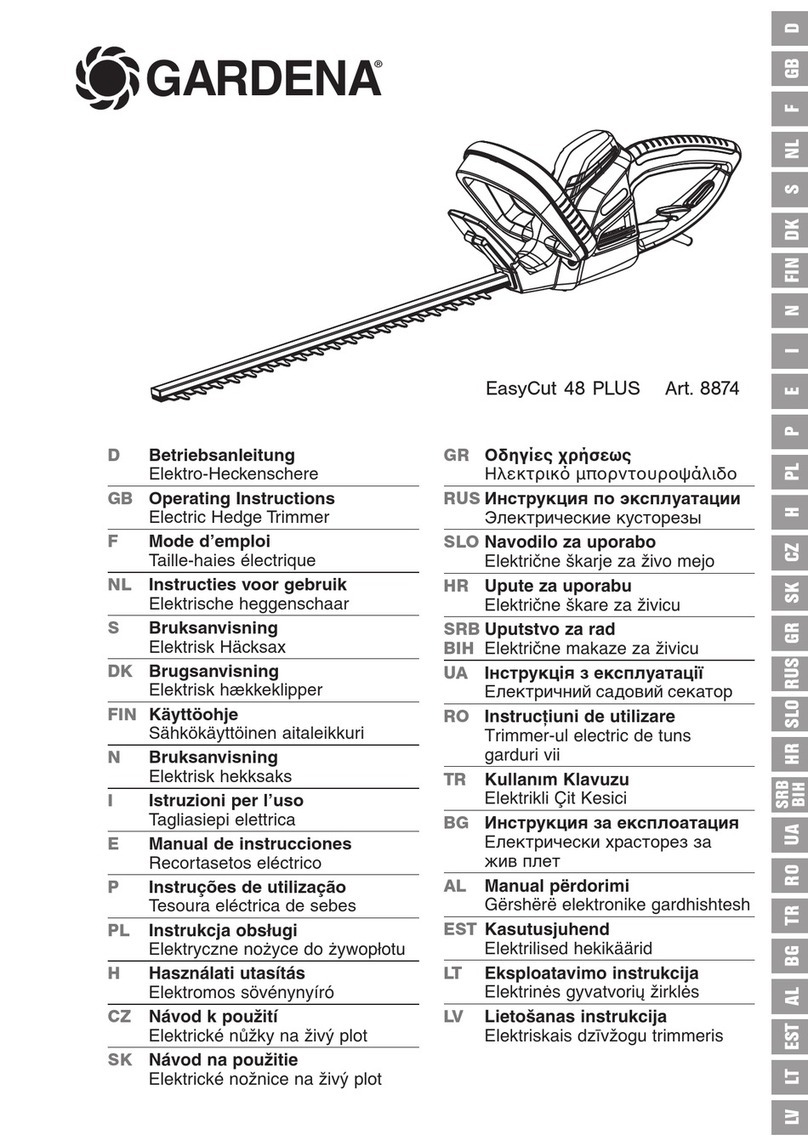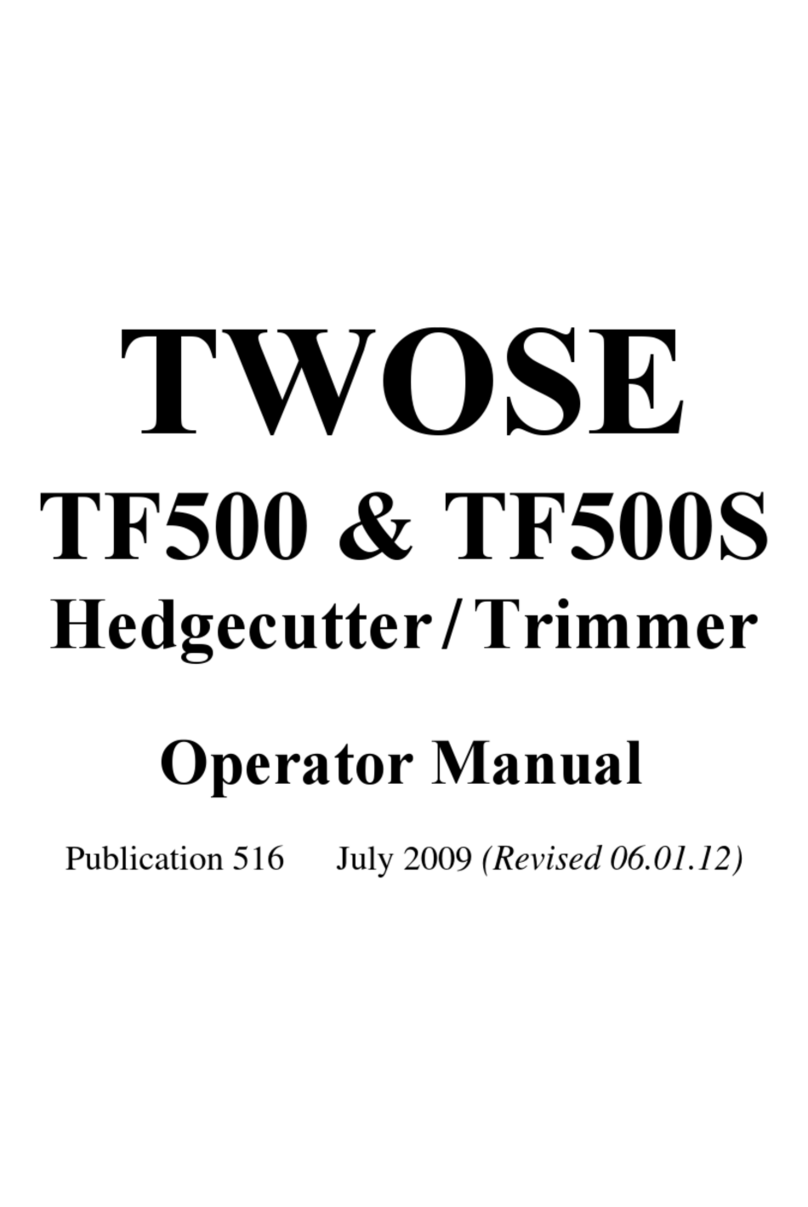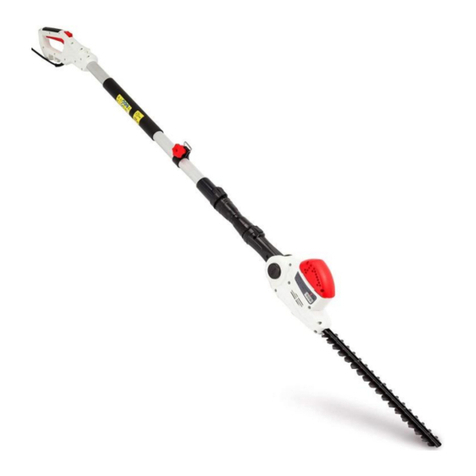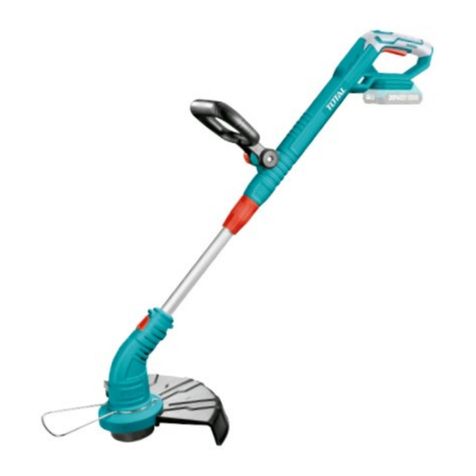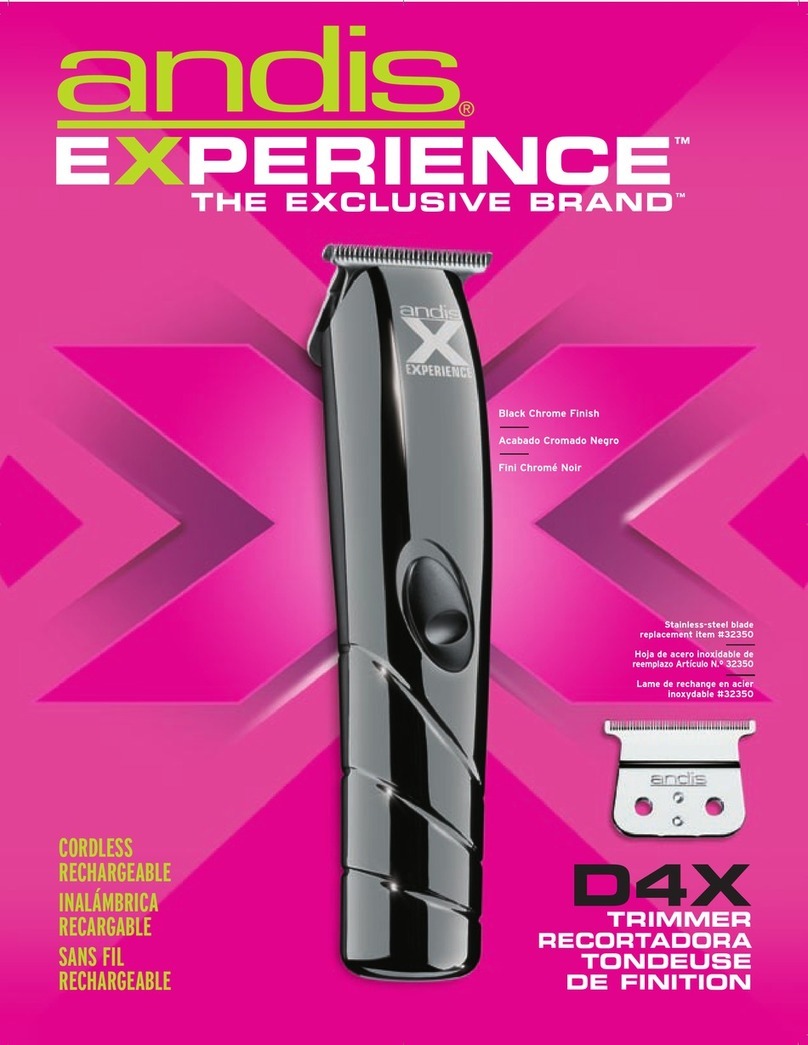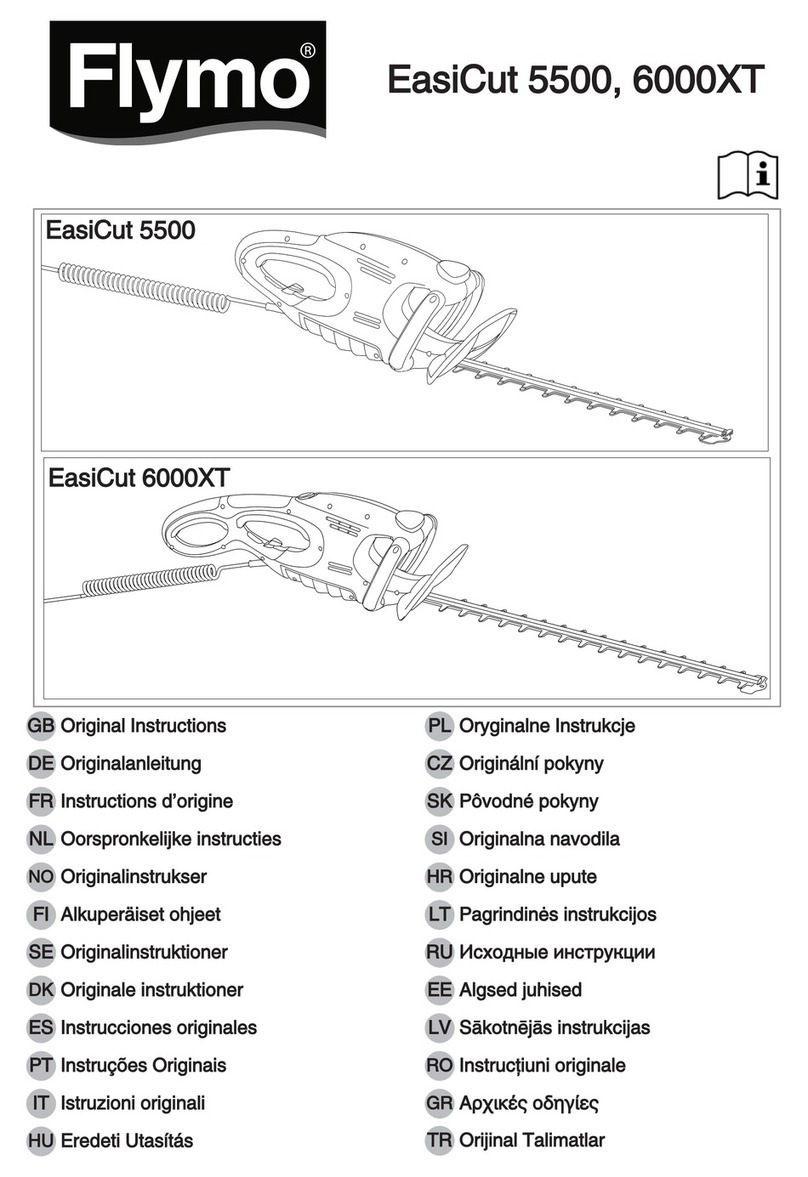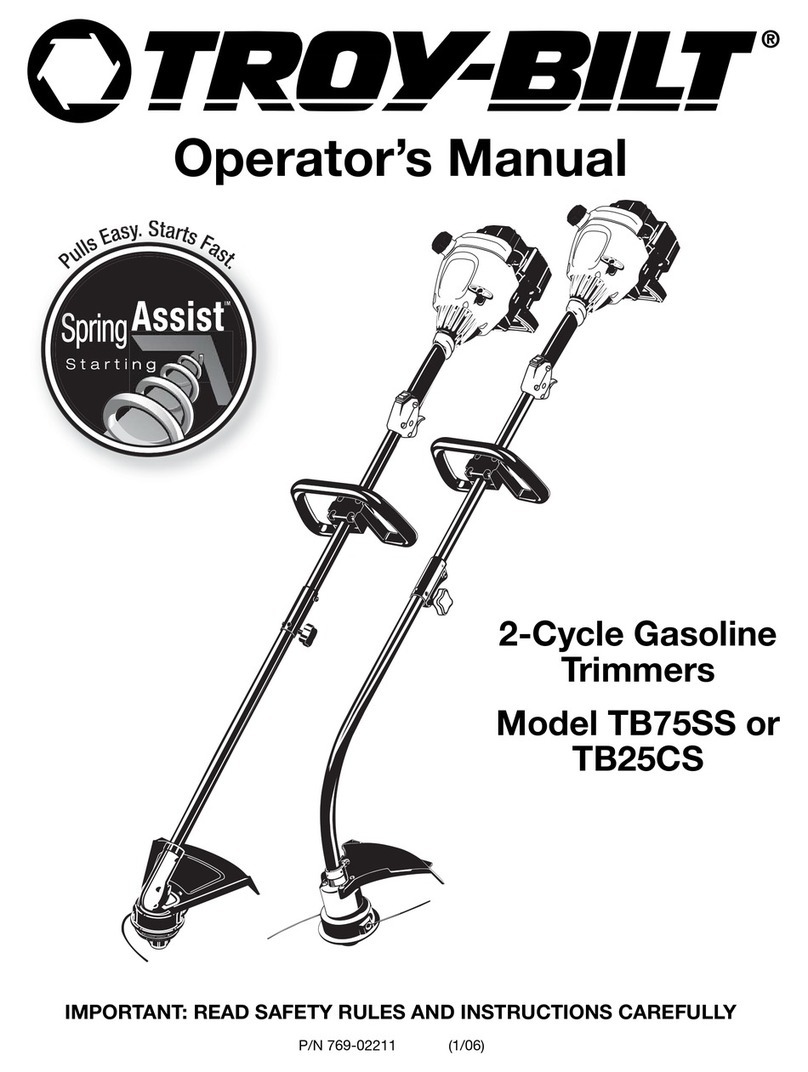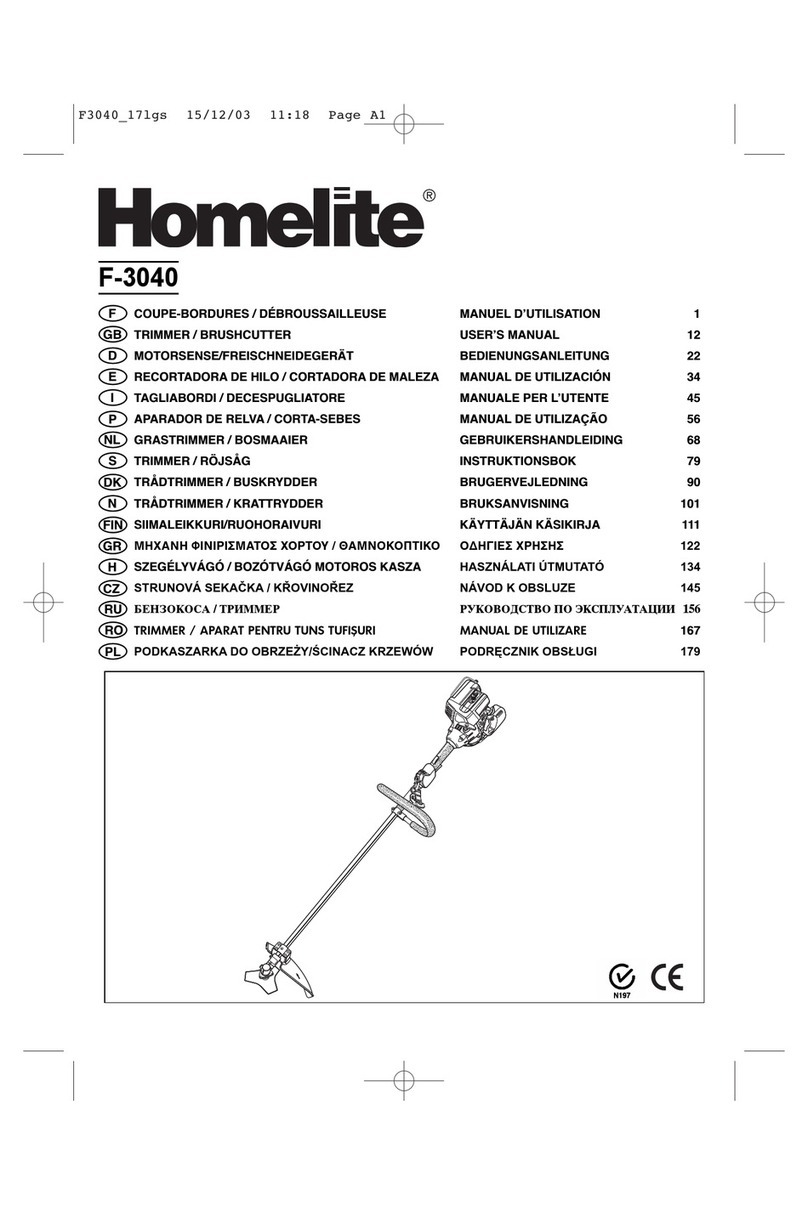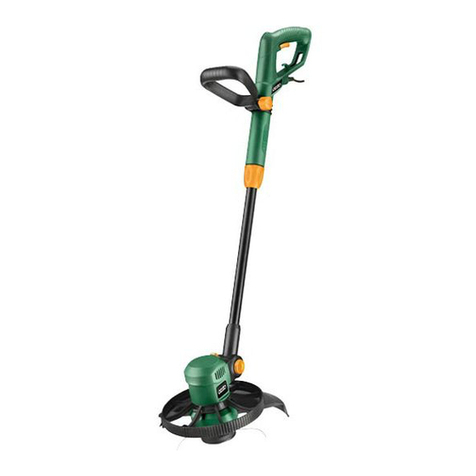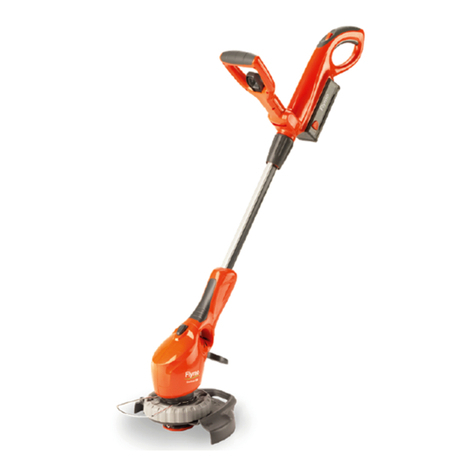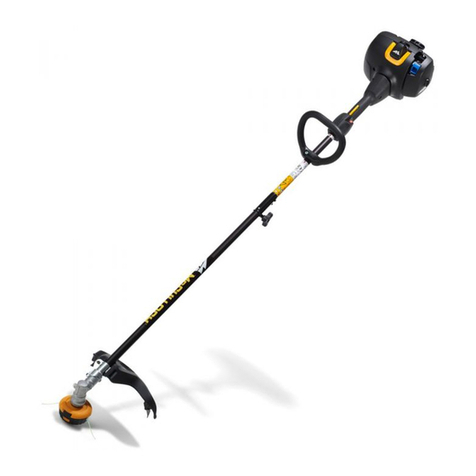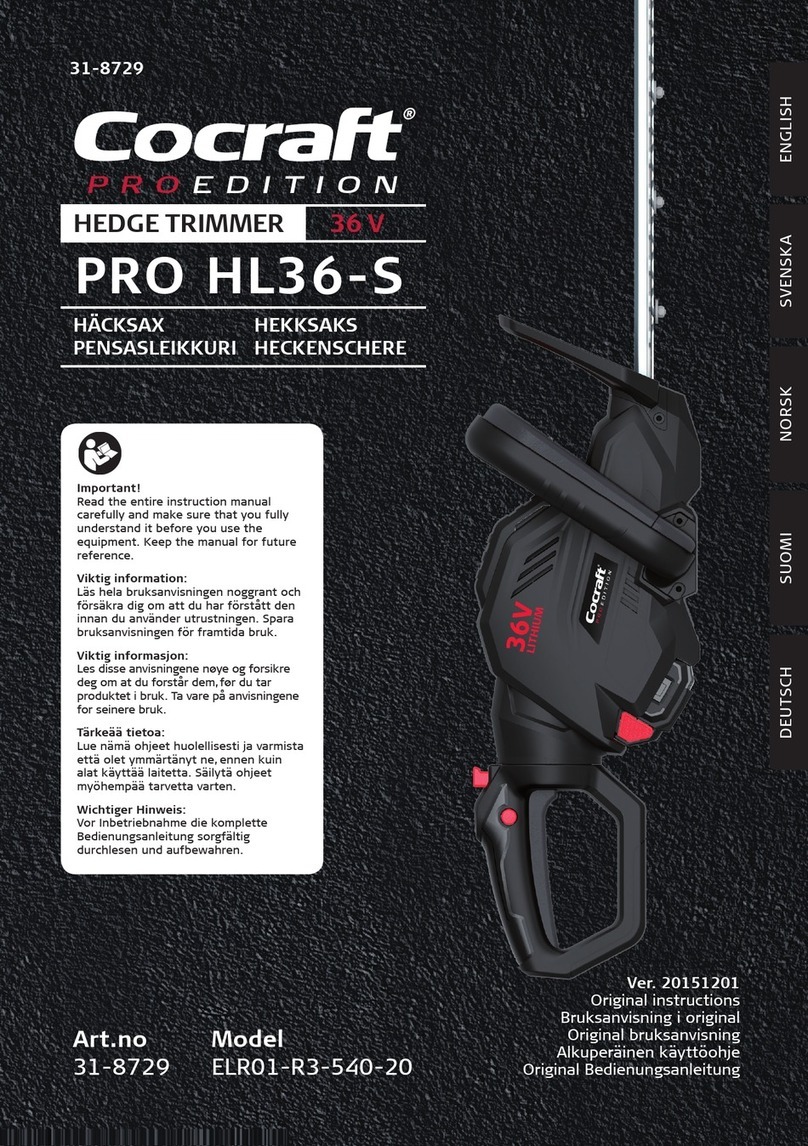
Operate your power tool so that it produces a
minimum of noise and emissions – do not run the
engine unnecessarily, accelerate the engine only
when working.
To reduce the risk of fire, do not smoke while
operating or standing near your power tool. Com‐
bustible fuel vapor may escape from the fuel sys‐
tem.
Dusts, mist and fumes emissions during the work
may be hazardous to your health. Wear respira‐
tory protection in case of heavy dust or smoke
emission.
If your power tool is subjected to unusually high
loads for which it was not designed (e.g. heavy
impact or a fall), always check that it is in good
condition before continuing work – see also
"Before Starting".
Check in particular that the fuel system has no
leaks and the safety equipment is fully operative.
Never use a power tool that is no longer safe to
operate. In case of doubt, contact a dealer.
Do not operate your power tool in the starting
throttle position – engine speed cannot be con‐
trolled in this position.
Never work without protection suita‐
ble for the respective machine and
cutting tool – risk of injury by ejected
objects!
Check the work site – rocks, metal
objects etc. may be caught up and
ejected – possibly over a distance of
15 m – risk of injury! – They can also
damage the cutting attachment and
other property (e. g. parking vehicles,
windows).
Be particularly careful when working on difficult,
densely grown terrain.
When mowing in high shrubbery, under shrub‐
bery and hedges: Hold the cutting tool at a work‐
ing height of at least 15 cm – avoid risks to ani‐
mals.
Before you leave the machine: Shut the engine
off.
Check the cutting tool regularly at short intervals,
and immediately if you feel a change in its
behavior:
–Turn off the engine, hold the device securely,
press the cutting attachment against the
ground to stop it
–Check the condition and firm seat, watch out
for fine cracks
–Immediately replace defective cutting tools,
also in case of minor hairline cracks
Clean grass and plant residue off the cutting
attachment mounting at regular intervals –
remove any build up of material from the cutting
attachment and deflector.
To reduce the risk of injury, shut off the engine
before replacing the cutting attachment!
Do not continue using or attempt to repair dam‐
aged or cracked cutting attachments by welding,
straightening or modifying the shape (out of bal‐
ance).
Particles or pieces may come off and hit the
operator or a bystander at a high speed – risk of
most severe injuries!
If a rotating cutting attachment touches a rock or
another hard object, sparks may be generated
which may possibly ignite combustible materials.
Also dried-out plants and brushwood are com‐
bustible, above all in hot and dry weather. If
there is a risk of fire, do not use cutting attach‐
ments in the vicinity of combustible materials,
dried-out plants or brushwood. It is mandatory
that you ask the responsible forestry office about
the current fire hazard.
2.7.1 When using mowing heads
Only use the protection with properly mounted
blade to ensure that the mowing line is restricted
to the permissible length.
Always switch off the engine to adjust the mow‐
ing line for manually adjustable mowing heads –
risk of injury!
Misuse with mowing lines that are too long
reduces the working speed of the engine. The
constant slipping of the clutch causes overheat‐
ing and damage to important components (e. g.
clutch, plastic housing parts) – e. g. due to the
cutting attachment rotating during idling – risk of
injury!
2.8 Vibrations
Prolonged use of the power tool may result in
vibration-induced circulation problems in the
hands (whitefinger disease).
No general recommendation can be given for the
length of usage because it depends on several
factors.
The period of usage is prolonged by:
–Hand protection (wearing warm gloves)
–Work breaks
English 2 Safety Precautions and Working Techniques
6 0458-234-8321-D
